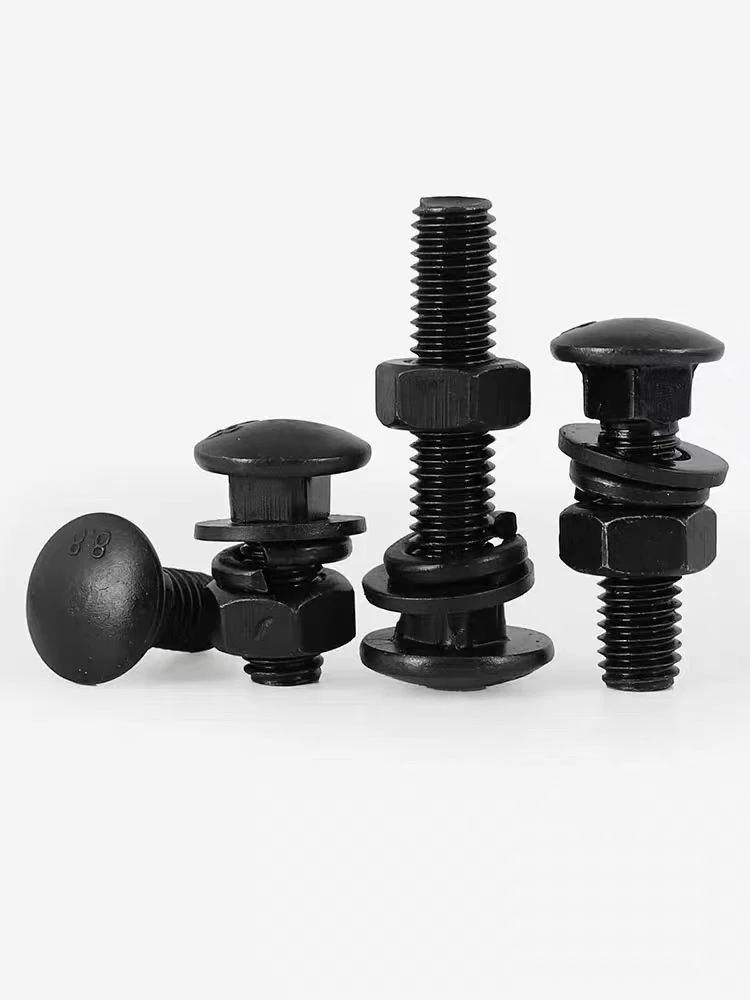

M14 Lock Washer Specifications and Installation Guide for Optimal Fastening Performance
Nov . 07, 2024 20:34 Back to list
M14 Lock Washer Specifications and Installation Guide for Optimal Fastening Performance
Understanding the M14 Lock Washer Essential Hardware for Secure Fastening
Lock washers, particularly the M14 lock washer, play an essential role in various mechanical and construction applications. These small yet critical components are designed to prevent bolts and nuts from loosening due to vibration and tension. The M14 designation refers to the size of the washer, specifically for bolts with a nominal diameter of 14 mm. In this article, we will explore the design, function, types, and applications of the M14 lock washer.
Design and Function
M14 lock washers are typically circular with a split or beveled edge. This unique design allows them to create additional friction against the nut and bolt interface when they are tightened. As the bolt is tightened, the washer compresses and expands, increasing the contact area with both the bolt head and the component being fastened. This mechanism helps to absorb dynamic forces and vibrations, which could otherwise lead to loosening.
The primary function of an M14 lock washer is to maintain the integrity of a fastening assembly. In environments subjected to constant vibration or movement, such as automotive engines or machinery, even the smallest loosening can lead to catastrophic failures. Therefore, incorporating an M14 lock washer into assemblies significantly enhances reliability.
Types of Lock Washers
There are several types of lock washers available, each designed for specific applications
. The most common types include1. Split Lock Washers This is the most widely used type, featuring a split design that provides a locking action as it’s compressed.
2. Toothed Lock Washers These washers have teeth that dig into the surface of the materials being fastened, offering a greater resistance to loosening.
m14 lock washer

3. Spring Lock Washers Similar to split washers but designed to provide more elasticity, helping to absorb shock and accommodate slight movements.
4. Wavy Lock Washers These have a wave-like design that provides a varying amount of load distribution and can be used in applications where slight movements are expected.
For M14 size, the split lock washer is most commonly adopted due to its effectiveness in protecting against loosening caused by vibration.
Applications
M14 lock washers find application in numerous fields, including automotive, aerospace, construction, and machinery. In the automotive industry, they are used extensively in engine assemblies, suspension components, and wheel assemblies, where reliability is paramount. In the construction sector, M14 lock washers secure various structural components, ensuring longevity and safety in buildings and bridges.
Furthermore, in equipment and machinery, these lock washers are critical in maintaining the performance and efficiency of machines that undergo rigorous operational conditions. Their ability to withstand environmental factors such as moisture and temperature variations also makes them suitable for industrial applications.
Conclusion
In summary, the M14 lock washer is a vital component in ensuring the security and integrity of fastened joints in various mechanical assemblies. Its design and function reduce the risk of loosening under dynamic conditions, making it an indispensable part of many industries. Whether in the automotive sector, construction, or heavy machinery, the M14 lock washer proves that small parts can have a significant impact on the overall performance and safety of engineering systems. By understanding and choosing the appropriate lock washers for specific applications, engineers and technicians can greatly enhance the reliability and durability of their projects.
Latest news
-
High-Strength Hot Dip Galvanized Bolts - Hebei Longze | Corrosion Resistance, Customization
NewsJul.30,2025
-
Hot Dip Galvanized Bolts-Hebei Longze|Corrosion Resistance&High Strength
NewsJul.30,2025
-
High-Strength Hot-Dip Galvanized Bolts-Hebei Longze|Corrosion Resistance&High Strength
NewsJul.30,2025
-
Hot Dip Galvanized Bolts-Hebei Longze|Corrosion Resistance&High Strength
NewsJul.30,2025
-
Hot Dip Galvanized Bolts - Hebei Longze | Corrosion Resistance, High Strength
NewsJul.30,2025
-
High-Strength Hot Dip Galvanized Bolts-Hebei Longze|Corrosion Resistance, Grade 8.8
NewsJul.30,2025

